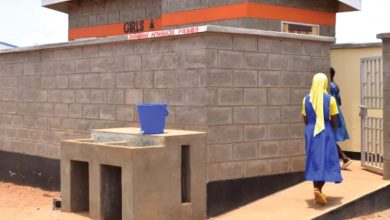Towards girls’ inclusion in sciences

Last month, science and mathematics teachers had a refresher course at Mzimba Secondary School to bolster their skills.
Although government had envisaged the in-service exercise giving the teaching personnel with efficient ways of doing things, some teachers were overheard clamouring for content as basic as why oil and water will never mix.
The knowledge gap is no surprise in a country where insufficient investment in sciences was clearly exposed by broken beakers, dusty benches, empty chemical bottles and fireless gas burners scattered in the laboratories where teachers were honing new methods. However, equally glaring was the pathetic representation of female faces in sciences. Of the 150 teachers in attendance, there were only 8 women: a mathematics teacher, seven of biology and none for physical science.
The gender imbalance may be shocking, but Luwinga Secondary School deputy head teacher Fides Manda-Msowoya says it is widespread, perpetuating the low involvement of girls in physics, chemistry, biology arithmetic, algebra and geometry.
“When approached, most female teachers said they are not up to the task. If we are struggling to get trainers aboard, how are we going to motivate school girls?’ wonders Manda-Msowoya, who was coordinating the course.
The shortage of role models worsens the situation since the Malawian girl has to surmount culturally rooted misconceptions that sciences and maths are hard, fit for males.
So was the case when Manda-Msowoya was a student at Ekwendeni Girls Secondary School in Mzimba North East in the mid 1980s, she says. Such remains the situation at Mtangatanga Community Day Secondary School in the district, where Esther Mhone, the only female science teacher, uses plastic bottles as beakers to demonstrate a point.
“It is easier to teach mathematics because it doesn’t require many things other than books, rules, but we always have to improvise in sciences because the school lacks basics like beam balances and tripod stands,” says Mhone who is a living symbol that girls can do sciences as well.
“The inclusion of women in the teaching of science and mathematics has always been an underrated need, but most girls quit the subjects because they have nobody to put it to them that they can do as well as male students given equal opportunities,” the teacher explains.
The voices for gender inclusion are rising at a time government is grappling with providing adequate supplies and qualified staff for science and maths. For the past two decades, the gaps created by the shortage of these requisites in State-run schools has been clear on the face of the National Best Science School Awards which almost became a trophy for privately and religiously owned of learning institutions. In the North, the winning league included Marymount Secondary in Mzuzu, St Patricks Seminary and Phwezi Foundation in Rumphi as well as Chaminade Secondary in Karonga.
Never has the message been louder and clearer that in 2002, when Karonga Diocese’s Bishop Dr Martin Mtumbuka was heading St Patrick’s Seminary had won the then Surf-sponsored award for two years on the trot. An education management scholar, rector Mtumbuka termed the feat a “wake-up call for government to start seriously investing in the teaching of sciences” in its schools.
That call seems to have gone unheeded.
In 2004, the Japanese government, through Jica, started training teachers in Strengthening Mathematics and Teaching in Secondary Education (Smasse) in the South Eastern Education Division (Seed). Today, government has adopted the approach to see students learn better, with the Japanese switching to pre-service teachers training at Chancellor College and Domasi College of Education (DCE) in Zomba.
“We recognise that enrolment has increased, but the quality of science and maths teachers usually leaves a lot to be desired,” says Tetsuya Takahashi, a Jica-sponsored technical advisor on teacher development in the Ministry of Education, Science and Technology.
Timothy Kumwenda learned at Mzimba Secondary school before he returned to head the national school. From that circuit, he has seen resources for the teaching of sciences dwindling drastically.
“A laboratory which used to take 40 learners now takes about 90,” says the head teacher, imploring government to make efforts to improve teachers’ capacity proportional to investment in equipping the schools with basic tools.
He explains: “With government funding, we cannot afford science instruments. If we concentrated on replacing broken beakers and test tubes, vital services, like provision of books, would suffer.”
His school 34 teachers: four of the 10 who teach science are female.
Each of the 600 students pay K250 per year for buying books and ten of them use one in science labs. The K150 000 generated from the student body can hardly buy a simple microscope, which costs about K300 000 online.
“When I was a student, we had nearly everything in place. Nowadays things have deteriorated that during national examinations, we use candles instead of gas burners,” he says.
It is amazing how the unarmed teachers are using locally available resources to make the teaching of sciences possible and government encourages this.
But Manda-Msowoya warns: “There is a limit to everything. Overreliance on improvisation may compromise the results and continue producing ill-prepared science learners who feel tensed and suffer self-esteem when they encounter real test tubes and beakers when they go for higher learning.”
Van Mhango teaches mathematics at Embangweni Community Day Secondary School in Mzimba which has one qualified mathematics teacher and no female science teacher.
In an interview, he primarily wanted to gain more content because “I do not know things”.
“Save for the lone mathematics graduate of Domasi Teachers College, the rest of the teachers, the five of us, finds it hard to impart simple theories to learners because we were taken straight from primary schools. We have no basic knowledge,” he states.
But this is just a glimpse of why it is no rocket science to see why the country needs to invest more in training teachers, including women, to meet its vision of making science the engine of national development.




